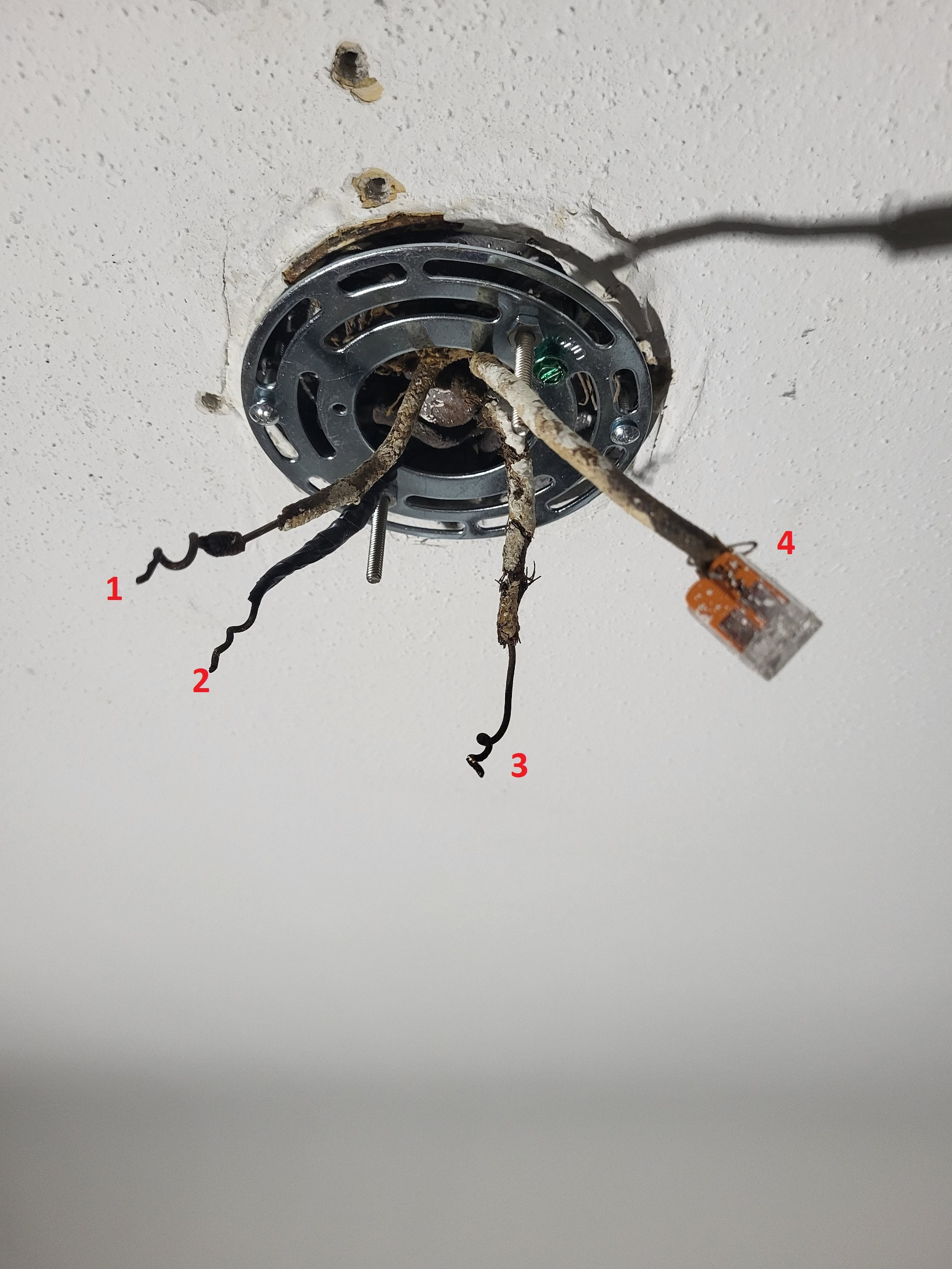I recently purchased a newly remodeled home built in 1920s. The contractor that flipped the home put a hideous Ikea LED fixture in the dining area so I purchased a new one to replace it. After removing the old fixture I noticed all of the wires are the same color with the old school insulation that used to be used. The pre-existing Ikea LED fixture was wired as follows: (refer to numbers on picture) Wires 1, 2, 3 were all twisted together and connected to one wire on the LED Ikea fixture Wire 4 was connected to the other wire on the LED Ikea fixture.
I pulled the wires apart and tested them individually with a non-contact voltage tester with the breaker switch ON.
Wires 1 & 2 have no power. Wire 3 Always has power. Wire 4 only has power when wall switch is turned on.
My new fixture has a Hot, a Neutral, and a Ground wire.
My question is How do I connect the existing wires to work with the new fixture?
Edit - I just attempted to turn on a floor lamp that is plugged into a fixture on my wall and it is not working. I believe its possible wire 1, or wire 2 or possibly both wires go to other outlets in the same room. I hope this information helps.

